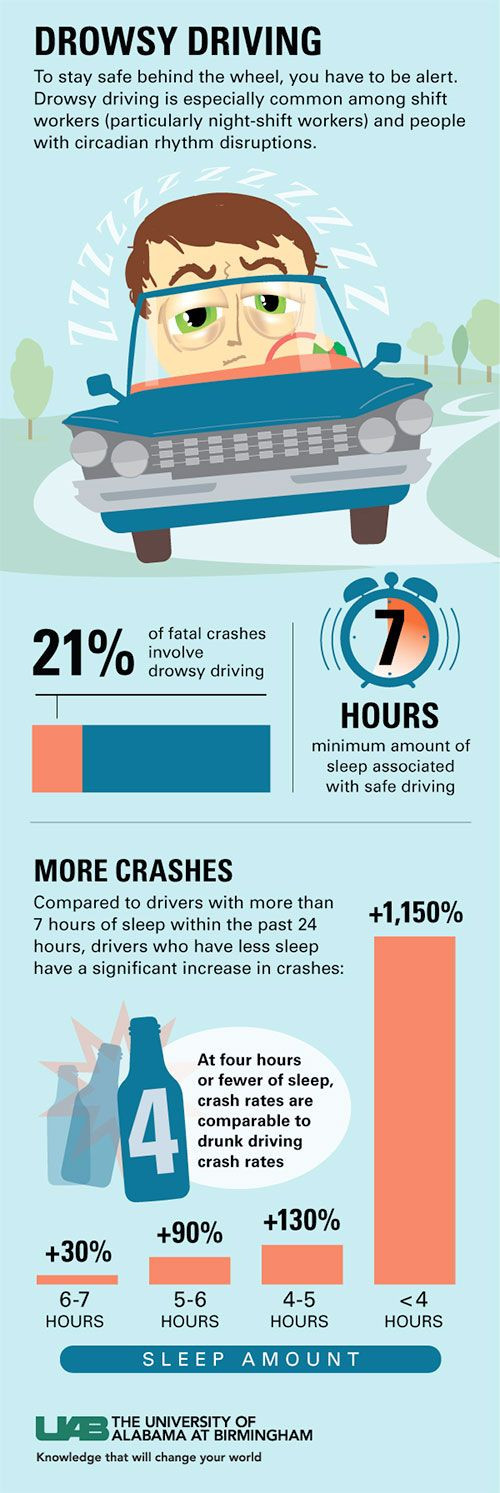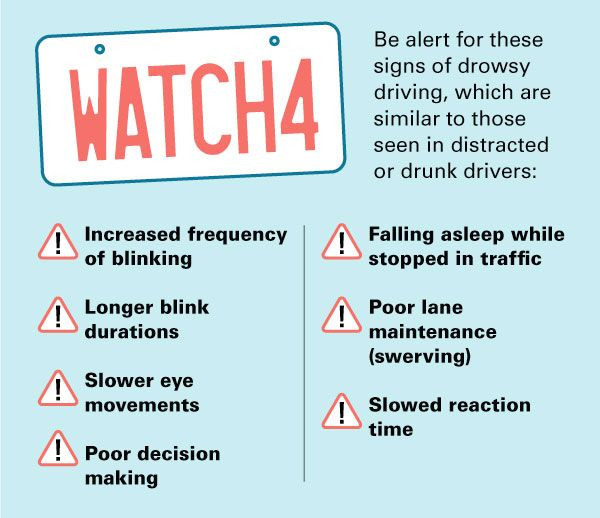Tips To Stay Awake Behind The Wheel When You're Driving Drowsy

Drowsy driving, like drunk driving, poses many risks to yourself, passengers, pedestrians, and others on the road.
Some estimates show that 21 percent of fatal crashes involve drowsy driving, which is often considered to be a form of distracted driving. The infographic below contains statistics on driving on less-than-ideal sleep, plus tips to manage your fatigue.
Read: Sleep Deprivation: 5 Ways It Can Affect Your Mind And Body
“The statistics are pretty jarring,” Benjamin McManus, a Ph.D candidate at the University of Alabama, said in a news release. “Compared to drivers who report typically getting seven or more hours of sleep nightly, those who typically sleep only four to five hours per night are 5.4 times more likely to be involved in a crash.”
McManus has done extensive research on the topic for a UAB lab, which focuses on preventing unintentional injuries, especially those resulting from motor vehicle crashes.
Drowsy driving usually happens because the driver didn’t get enough sleep, but it can also occur due to untreated sleep disorders, drinking alcohol, or shift work, according to the Centers for Disease Control and Prevention. Drowsiness can limit your attention to the road, slow reaction time to brake or steer, and affect your decision-making ability.
Recognizing the signs of drowsy driving is important to help prevent potentially fatal crashes. Some of the common signs include increased frequency of blinking, longer blink durations, slower eye movements, and swerving. The CDC also lists warning signs, such as, yawning, difficulty remembering the past few miles driven, missing your exit, and hitting a rumbling strip on the side of the road.

If you experience any of those signs, the best thing to do is stop driving, and take a 15-20 minute nap, or change drivers. Research shows naps can aid with sustained attention, learning, and memory, McManus notes. Other suggested preventative and countermeasure techniques are to drink a caffeinated beverage, or engage in alertness-enhancing activities, such as adjusting the radio, opening a window, or chatting with passengers.
“While these activities can help, they aren’t necessarily perfect solutions,” said McManus. “The countermeasures that involve continuing to drive after noticing signs of drowsiness carry several risks. For instance, several alertness-enhancing activities may be distracting.”
Furthermore, he emphasizes just how vital sleep is to our health.
“A culture change regarding the importance of sleep might make the biggest impact of all,” McManus said. “Currently, we tend to view sleep as one of the first things to sacrifice when we face impending deadlines or busy schedules. Recognizing just how dangerous drowsy driving can be is an important step in making us all safer on the road.”
In 2013, the National Highway Traffic Safety Administration estimated that drowsy driving was responsible for 72,000 crashes, 44,000 injuries, and 800 deaths. But, the CDC reports these numbers are underestimated and it’s likely that as many as 6,000 fatal crashes are the result of drowsy drivers.
See also: Get Better Sleep: Infographic Shows Why You Can’t Make Up For Hours Of Missed Sleep
Drowsy Driving No More: Device Monitors Alertness, 'Nudges' You When You're Falling Asleep



























